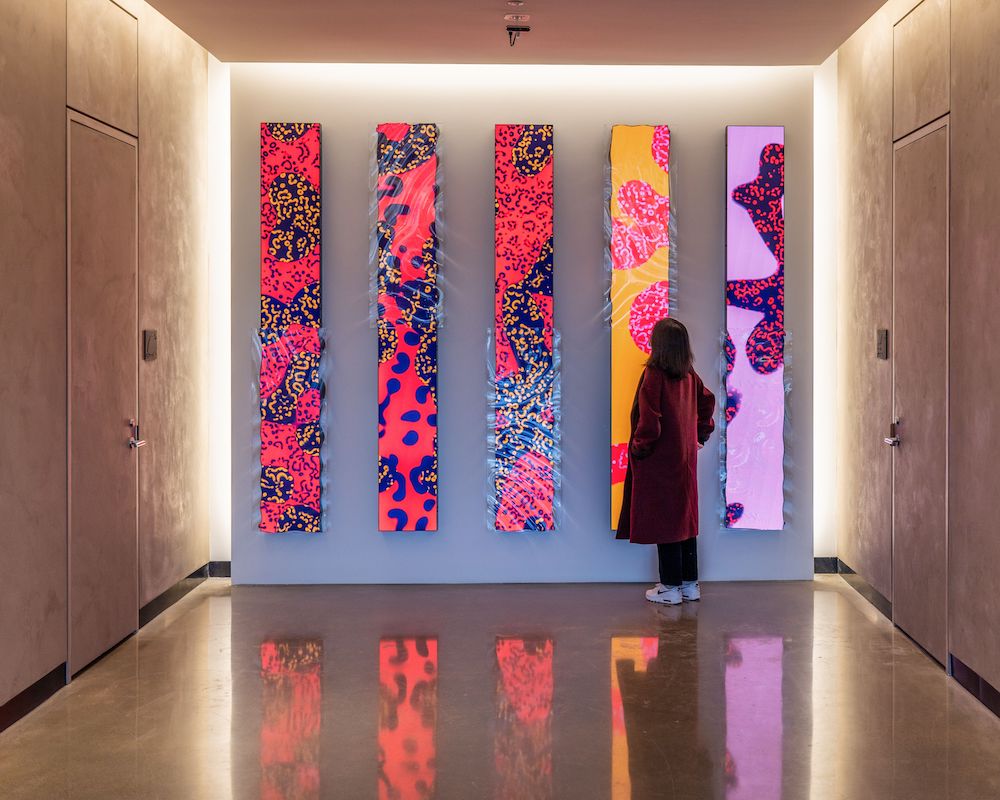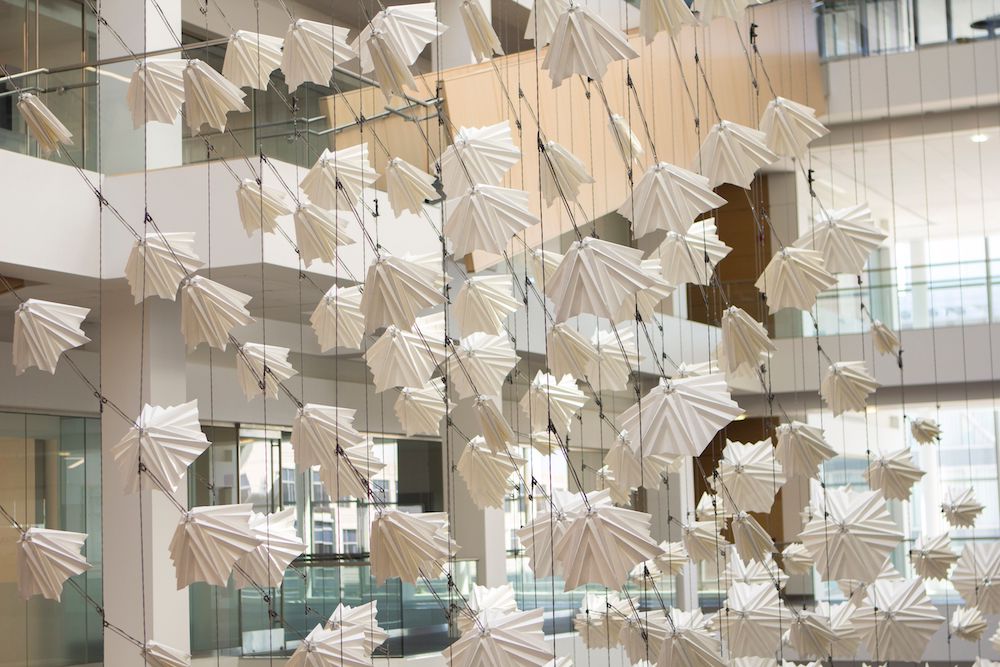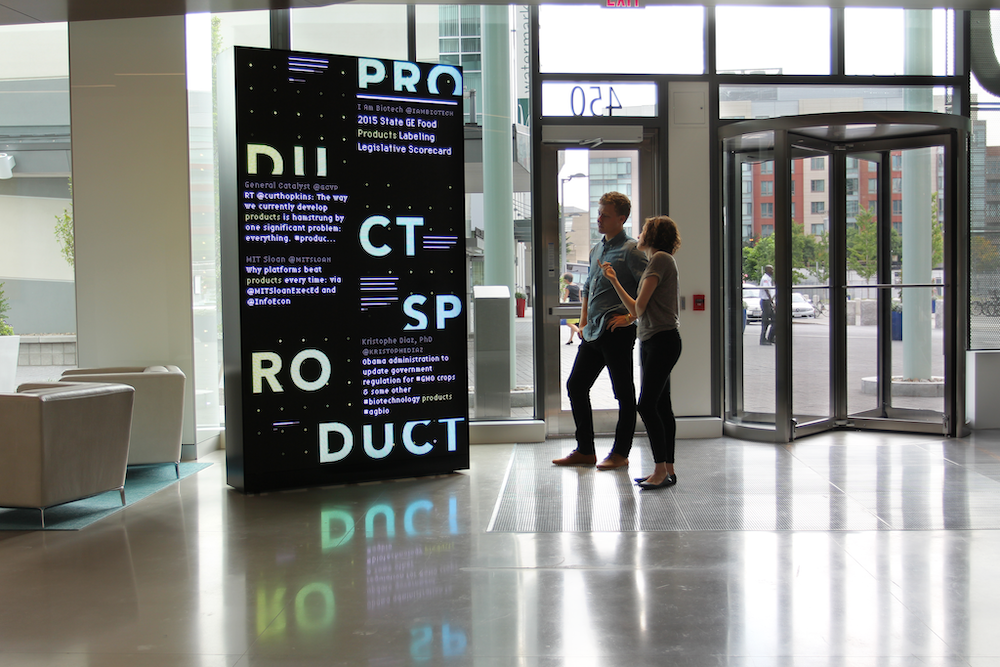In the coming year, designers will be more intentional in their use of technology in office design, says John Rothenberg of SOSO.
– Stay tuned as we share more 2023 trends for the entire month of December & beyond –

Gone are the days when the workplace was just a place to sit at a desk and do work. Today, people look for a great experience when leaving the comforts of home, and the office is no exception. This applies to employees, recruits, customers, and the larger community. Purposeful integration of technology in the workplace can be the solution to a number of key challenges facing today’s workplace, from attracting and retaining top talent, to building connection and community, to fostering a culture of innovation.
“Digital experience design”is a field that marries technology, design, and physical space. As technology advances, it determines the winners and losers in nearly every industry and market. However, business leaders must incorporate technology in a thoughtful and meaningful way rather than just installing a few TVs on the walls or a flashy display for clients and guests.
In the coming year, designers will be more intentional in their use of technology in office design, focusing on helping employees exercise both their emotional and rational brains. When brought in with thought and meaning, technology can be a powerful tool that transforms the workplace into an experiential space that inspires creativity, collaboration, and community among coworkers and stakeholders, ultimately connecting them to the purpose and mission of the company.

Benefits of Purposeful Technology Integration
One of the key benefits of integrating purposeful technology is increasing well-being and reducing employee stress and anxiety. Teams can do this by incorporating biophilic elements, such as movements and colors from nature, into the design of the workspace. Purposeful technology can also build community and create positive social interactions among employees. This happens through digital activations, such as dynamic lighting and digital signage, that engage and inspire audiences.
In addition to promoting well-being and social connections, purposeful technology integration can foster creativity and exercise the emotional brain. Every company is now a technology company, so it’s essential that teams bring their innovation to the forefront and make it tangible to all stakeholders, including employees, recruits, customers, and even the community. By providing employees with the ability to control their environment and reflect their work back to them, organizations can foster a sense of connection and support among their workforce.
Innovation isn’t always pretty, but if business leaders can connect teams to the organization’s mission and vision in artistic ways, it’ll create a meaningful impact. By elevating innovation’s importance, relevance, and role in work-life, organizations can foster a spirit of inventiveness and a deeper connection to their purpose.

Implementing Digital Experience Design
To effectively implement technology in the workplace, it is essential to encourage a mindset shift among employees and decision-makers. Lead with a clear strategy developed with input from multiple stakeholders, to ensure that it reflects the organization’s purpose, design principles, and business objectives.
It’s also essential to focus on technology as an experience rather than a platform, which means starting with the desired content and end goal, then choosing the technology that will best support it. It is crucial to avoid the temptation to simply display information for the sake of having technology present, as this can be counterproductive and potentially overwhelming for employees.
It’s all about the experience. If bringing employees back to the office is a core goal of an organization, then it’s vital to differentiate the in-person workspace from remote work to focus on the potential for increased connection and unanticipated interactions. By designing the workspace to encourage these interactions, organizations can create a space that is more than just a functional environment; a place that is more beneficial and inspirational than the home.
Ultimately, a more expansive and experience-focused approach to technology integration in the workplace can lead to increased productivity and a more positive and supportive workplace culture. The integration of purposeful technology in the workplace can improve the quality of work life for employees and promote a sense of connection and innovation within the organization. By incorporating technology that reflects the company’s purpose and values, organizations can differentiate themselves in a competitive market and foster a positive and supportive workplace culture.

